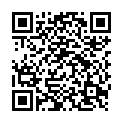|
|
|
| Module code: E403 |
|
2V (2 hours per week) |
|
3 |
| Semester: 4 |
| Mandatory course: yes |
Language of instruction:
German |
Assessment:
Written examination
[updated 10.03.2010]
|
E403. Biomedical Engineering, Bachelor, ASPO 01.10.2011
, semester 4, mandatory course, course inactive since 28.11.2013
E403 Electrical Engineering, Bachelor, ASPO 01.10.2005
, semester 4, mandatory course
|
30 class hours (= 22.5 clock hours) over a 15-week period.
The total student study time is 90 hours (equivalent to 3 ECTS credits).
There are therefore 67.5 hours available for class preparation and follow-up work and exam preparation.
|
Recommended prerequisites (modules):
E104 Fundamentals of Electrical Engineering I
E203 Fundamentals of Electrical Engineering II
[updated 13.03.2010]
|
Recommended as prerequisite for:
E502 Control Engineering I
E503 Process Automation
E532
E602 Control Engineering II
[updated 14.04.2013]
|
Module coordinator:
Prof. Dr. Benedikt Faupel |
Lecturer:
Prof. Dr. Benedikt Faupel
[updated 13.03.2010]
|
Learning outcomes:
In this module, students will learn the fundamental ideas necessary for assessing elementary signal and data transmission systems in automation technology. Having acquired this knowledge, students will be able to use mathematical models to describe real processes and to design and dimension suitable controllers. After completing this course, students will have acquired the methods and techniques required for the modules Control Engineering I and II and for the Automation Engineering lab course.
[updated 10.03.2010]
|
Module content:
1.Introduction to systems theory
1.1 Definitions, standards and nomenclature
1.2 LTI systems and nonlinear systems
1.3 Application of the Laplace transform and computational rules
1.4 Describing the time response of systems (weighting functions and step
response)
1.5 Block diagrams
2.Functional description of elementary transfer elements
2.1 Differential equations and transfer functions
2.2 Distribution of poles and zeros
2.3 Root locus and Bode plots
3.Static and dynamic behaviour of closed-loop control systems
4.System stability
4.1 Definition of stability
4.2 Algebraic stability criteria (Routh-Hurwitz criterion)
4.3 Cremer-Leonhard-Mikhailov
4.4 Simplified Nyquist criterion in root locus plots
4.5 Simplified Nyquist criterion in Bode plots
5.Technical applications
5.1 Creating block diagrams
5.2 Setting up and solving differential equations
5.3 Determining time response
6.Controllers
6.1 Introduction to the PID controller
6.2 Deriving elementary controllers from the PID controller
6.3 P controller
6.4 I controller
6.5 D controller
6.6 PI controller
6.7 PD controller
7.Simulation of transmission systems
[updated 13.03.2010]
|
Teaching methods/Media:
Lecture notes, PC simulation using Matlab/Simulink, video projector
[updated 10.03.2010]
|
Recommended or required reading:
Unbehauen, H.: Regelungstechnik I; 11. Auflage; Vieweg Verlag, Braunschweig; 2001
Lutz, H.; Wendt, W.: Taschenbuch der Regelungstechnik; 3. Auflage; Verlag Harri Deutsch, Frankfurt/Main 2000
Föllinger, O.: Regelungstechnik; 8. Auflage; Hüthig Verlag, Heidelberg 1994
Föllinger, O.: Laplace- und Fourier-Transformation. Hüthig Verlag, Heidelberg, 1986
L. Merz; H. Jaschek: Grundkurs der Regelungstechnik, Oldenbourg Verlag, München, 1985
H. Jaschek; W. Schwimm: Übungsaufgaben zum Grundkurs der Regelungstechnik, Oldenbourg Verlag, München 1993
Walter, H.: Kompaktkurs Regelungstechnik. Vieweg Verlag, Braunschweig 2001
Grupp F.; Grupp F. Matlab 6 für Ingenieure. Oldenbourg Verlag, München 2002
[updated 10.03.2010]
|


